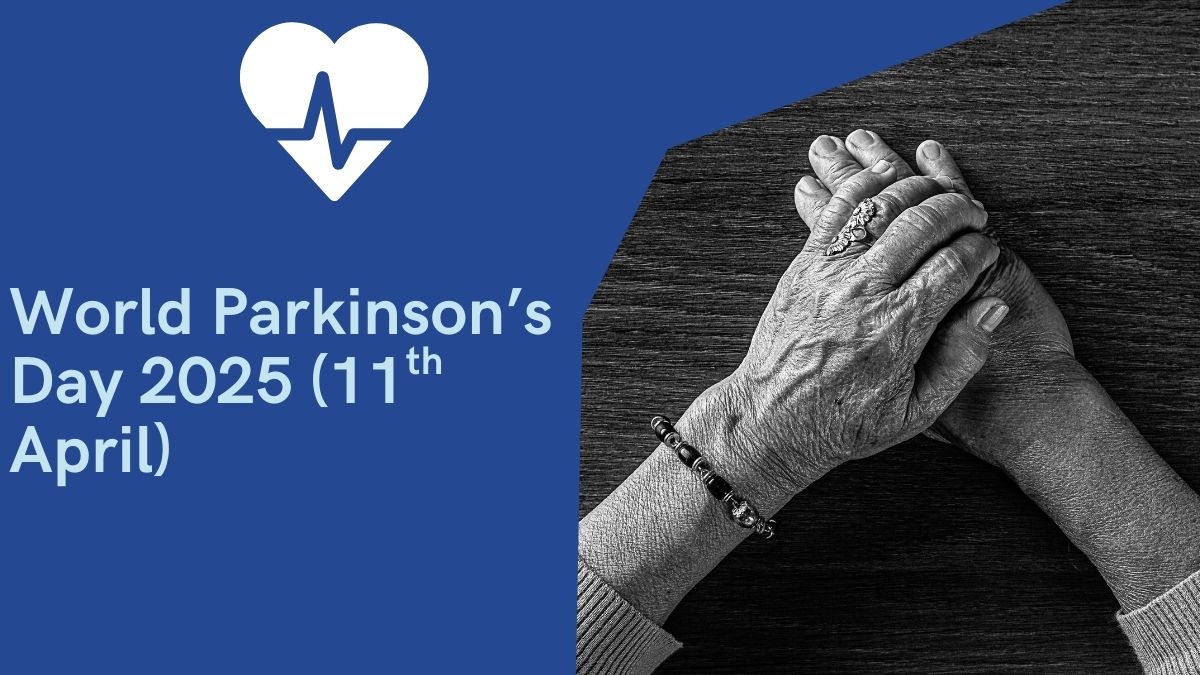Every year on April 11, the world observes World Parkinson’s Day, a global initiative to spread awareness about Parkinson’s Disease, a progressive neurodegenerative disorder that affects millions of people globally. Established in 1997 by the European Association for Parkinson’s Disease, this day honors the legacy of Dr. James Parkinson, who first described the disease in 1817. As we mark World Parkinson’s Day 2025, the focus is on educating people about the symptoms, stages, treatment options, and the importance of early diagnosis and lifestyle management. A key symbol of this day—the red tulip—represents hope, unity, and strength in the global Parkinson’s community.
Key Facts about Parkinson’s Disease
- What It Is: A progressive neurological disorder that affects movement, memory, sleep, and mood.
- Cause: Caused by the loss of dopamine-producing neurons in the brain, especially in the substantia nigra region.
Global Impact
- Affects over 10 million people worldwide.
- Nearly 1 million patients in India alone.
Who It Affects
- Most common in people over 60 years old.
- Around 10–15% of cases occur in those under 50.
Why April 11? History & Symbolism
Historical Significance
- April 11 is the birth anniversary of Dr. James Parkinson.
- Declared World Parkinson’s Day by Parkinson’s Europe and WHO in 1997.
Symbol
- The red tulip is the official symbol, adopted globally due to advocacy efforts led by Lizzie Graham, co-founder of Parkinson’s Europe.
Symptoms of Parkinson’s Disease
Movement (Motor) Symptoms
- Tremors (shaking hands or limbs)
- Muscle stiffness (rigidity)
- Bradykinesia (slow movement)
- Postural instability and balance issues
- Shuffling gait and difficulty walking
Non-Movement (Non-Motor) Symptoms
- Depression, anxiety, irritability
- Constipation and urinary issues
- Sleep disturbances
- Cognitive decline and memory loss
- Loss of taste and smell
- Pain and fatigue
Stages of Parkinson’s Disease
- Stage 1: Mild symptoms, usually on one side of the body; daily activities unaffected.
- Stage 2: Symptoms affect both sides; posture, walking, and facial expressions worsen.
- Stage 3: Mid-stage; balance issues arise, but independence is still possible.
- Stage 4: Severe symptoms; daily activities need assistance; walking aid required.
- Stage 5: Advanced; bedridden or in wheelchair; 24/7 care required.
Diagnosis of Parkinson’s Disease
- No single diagnostic test exists.
Diagnosis is based on,
- Medical history
- Neurological examination
- Symptom progression
Imaging Tests
- MRI to rule out other brain disorders
- DaTscan to detect dopamine activity
Treatments & Management
- No known cure, but symptoms can be managed.
Common treatments include,
- Levodopa-Carbidopa (most effective medication)
- Dopamine agonists
- MAO-B inhibitors
- Deep Brain Stimulation (DBS) in advanced cases
Lifestyle Support,
- Regular exercise
- Balanced diet
- Physical and speech therapy
- Emotional and social support
Living with Parkinson’s
- Although progressive, each case is unique.
- Early diagnosis and customized care plans allow many people to lead fulfilling lives.
- Support groups, therapy, and adaptive strategies help manage symptoms effectively.
Raising Awareness
World Parkinson’s Day aims to,
- Spread accurate information
- Combat stigma
- Encourage early detection
- Promote research
- Celebrate the resilience of those living with Parkinson’s
- Parkinson’s Europe emphasizes the importance of exercise and movement in 2025.
| Summary/Static | Details |
| Why in the news? | World Parkinson’s Day 2025, Date, History, Symptoms |
| Date | April 11, 2025 |
| Established | 1997 by Parkinson’s Europe and WHO |
| Named After | Dr. James Parkinson (first described the disease in 1817) |
| Global Symbol | Red tulip |
| Cause | Loss of dopamine-producing nerve cells |
| Affected Population | 10+ million globally, ~1 million in India |
| Common Age Group | Over 60 years, but 10–15% under age 50 |
| Motor Symptoms | Tremors, stiffness, slowness, posture problems |
| Non-Motor Symptoms | Memory loss, constipation, sleep issues, mood disorders |
| Treatment Options | Medication (e.g., Levodopa), DBS, exercise, therapy |



 World Basketball Day 2025 Celebrates Bas...
World Basketball Day 2025 Celebrates Bas...
 UN Celebrates Second World Meditation Da...
UN Celebrates Second World Meditation Da...
 Winter Solstice 2025 Observed on Sunday,...
Winter Solstice 2025 Observed on Sunday,...







